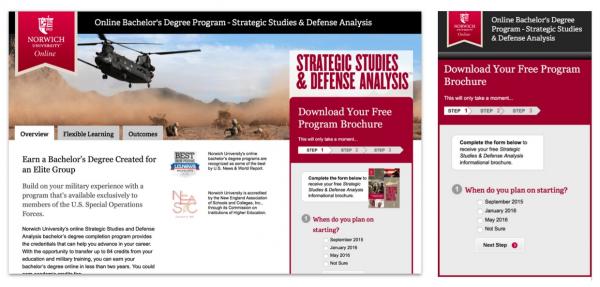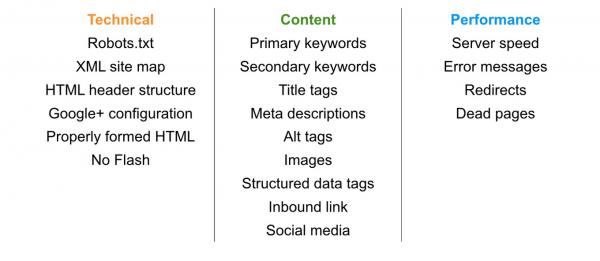3 Higher Education Marketing Projects That Will Rev Your Lead Generation Engine
A round-up of three short projects that will tune up your higher education marketing plans for the fall and put your lead generation engine into overdrive.
Here’s a round-up of three short projects that will tune up your higher education marketing plans this year. Each project will increase your campaign’s reach to prospective students on the web. Pressed for time? We’ve included a quick fix for each item if you’ve only got a few hours to invest.
Redesign Your Call to Action Forms
Lead capture forms that take users out of the template, offer a different design, or require a login result in significant drop-off in completion rates and work against your marketing efforts. Does your website’s request information marketing form resemble this one?

If you answered yes, here are a few tips for redesigning the request information form on your website:
-
Keep the lead generation form within the design of your site. When the design changes users experience a drop in trust which means decreased conversions.
-
A click on “request more information” or “schedule a campus visit” button does not mean that your prospect is ready to act. Don’t be too quick to push to the form. First, offer additional information.
Quick Fix: If you can’t make any design changes, take a hard look at all of the information you are asking for. What can you cut? What can you ask for later? This form is too long and too complicated just to get a brochure.
Create Landing Pages for Lead Generation Campaigns
Are you investing in digital lead generation campaigns – PPC, social, display or retargeting – and just deep-linking to the degree program pages on your main website? You can improve your return by directing the click traffic to dedicated landing pages or microsites for each program. Through our research on the prospective student journey, we’ve found when presented with the option to find an answer on their own, prospects will start “wandering” your site looking for the answer which means they’re wandering away from your form.

Above is an example of a microsite landing page in desktop and mobile for Norwich University’s online graduate programs. It’s best to focus on top messages and leave your user wanting more information that can only be found by reaching out to connect.
Quick Fix: Don’t have time or budget to design custom landing pages? Try a hosted-service like LeadPages or UnBounce.
Quick Search Engine Optimization Fixes
Do you know that Google uses the speed of your site, overall site performance, and number of errors to rate the quality of your site? Performance issues are one-third of the search engine optimization pie.

Performance issues are usually the least reviewed items and some of the easiest to resolve. If you don’t have Google Webmaster Tools configured, your first step should be to set it up on your site and get a glimpse into what server performance issues are impacting your search results.
If you’re inspired to fix-up some content to improve search engine optimization, review (or write for the first time) the meta-descriptions for each of your pages. Feeling overwhelmed? Make it manageable and focus on your degree program pages.
Quick Fix: Make sure that your XML sitemap is installed and configured. Google Webmaster tools can tell you if it is setup. If you need help creating one, Google tells you how to get started.
Pick one project or do them all this quarter and you’ll be on your way to improving your higher education marketing campaigns in the new year.